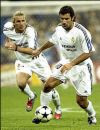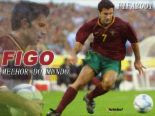The dollar is RM 3.15 today. In no time it will reach its old levels of RM 2.80 to the dollar when it stabilises. This is the ringgit's 'real' level. But oil is touching $115 this week! It was predicted to touch $140 by year end but now we have to revise it to by mid July! This is the US revenge against China and rest of the third world for not opening up. What this means is economic chaos, with the malays most badly hit! Another 50,000 graduates will be unemployed adding to the existing 120,000, almost all malays. Cars and homes will be on the sales block at rock bottom prices. Supermarkets and shopping complexes will be empty.
The downward spiral has not run its course and I'm predicting a Depression for the world economy. The Sub Prime crisis has a way to go, the USD value is deteriorating fast and as a result the oil price and food costs spiral out of control. The US election is going to result in Obama or John McCain coronation and go figure what is going to happen to the economy? Yes, the world is going to experience a Depression before it gets better and that will be a way to go. So guys/gals cash up and don't play heroes with the share market.
THE $US is losing its value because the FED is printing more money than it should. The FED is saving their friends in the banking industry. The original objective of the FED was to protect the value of the $US. What happened is the opposite! Debasing the $US will only cause worldwide inflation as: - Commodity prices worldwide will rise to compensate for the loss in value of the $US. - China is NOW exporting inflation as the Yuan will appreciate - Demand for commodities exceed the supply of commodities. So price will go UP. CONCLUSION: Worldwide Inflation rate will rise significantly. Real Economic growth will probably stagnate. Inflation will erode purchasing power
We are left ... with the thought that the Federal Reserve Board does not know what it is doing. This is the "Wizard of Oz" (*) theory, in which we pull away the curtains only to find an old man with a wrinkled face, playing with lights and loudspeakers. The analogies to The Wizard of Oz work for a reason. According to later commentators, the tale was actually written as a monetary allegory (EX. Atlas Shrugged), at a time when the "money question" was a key issue in American politics. In the 1890s, politicians were still hotly debating who should create the nation's money and what it should consist of. Should it be created by the government, with full accountability to the people? Or should it be created by private banks behind closed doors, for the banks' own private ends? William Jennings Bryan, the Populist candidate for President in 1896 and again in 1900, mounted the last serious challenge to the right of private bankers to create the national money supply. According to the commentators, Bryan was represented in Frank Baum's 1900 book The Wonderful Wizard of Oz by the Cowardly Lion. The Lion finally proved he was the King of Beasts by decapitating a giant spider that was terrorizing everyone in the forest. The giant spider Bryan challenged at the turn of the twentieth century was the Morgan/Rockefeller banking cartel, which was bent on usurping the power to create the nation's money from the people and their representative government. Before World War I, two opposing systems of political economy competed for dominance in the United States .
One operated out of Wall Street, the New York financial district that came to be the symbol of American finance. Its most important address was 23 Wall Street , known as the "House of Morgan." J.P. Morgan was an agent of powerful British banking interests. [Now, as then, the European Monarchies and Rothschild Family.] The Wizards of Wall Street and the Old World bankers pulling their strings sought to establish a national currency that was based on the "gold standard," one created privately by the financial elite who controlled the gold. The other system dated back to Benjamin Franklin and operated out of Philadelphia, the country's first capital, where the Constitutional Convention was held and Franklin's "Society for Political Inquiries" planned the industrialization and public works that would free the new republic from economic slavery to England. The Philadelphia faction favored a bank on the model established in provincial Pennsylvania, where a state loan office issued and lent money, collected the interest, and returned it to the provincial government to be used in place of taxes. President Abraham Lincoln returned to the colonial system of government-issued money during the Civil War; but he was assassinated, and the bankers reclaimed control of the money machine. The silent coup of the Wall Street faction culminated with the passage of the Federal Reserve Act in 1913, something they achieved by misleading Bryan and other wary Congressmen into thinking the
Federal Reserve was actually federal. Today the debate over who should create the national money supply is rarely heard, mainly because few people even realize it is an issue. Politicians and economists, along with everybody else, simply assume that money is created by the government, and that the "inflation" everybody complains about is caused by an out-of-control government running the dollar printing presses. The puppeteers working the money machine were more visible in the 1890s than they are today, largely because they had not yet succeeded in buying up the media and cornering public opinion. Economics is a dry and forbidding subject that has been made intentionally complex by banking interests intent on concealing what is really going on. It is a subject that sorely needs lightening up, with imagery, metaphors, characters and a plot; so before we get into the ponderous details of the modern system of money- based-on-debt, we'll take an excursion back to a simpler time, when the money issues were more obvious and were still a burning topic of discussion. The plot line for The Wizard of Oz has been traced to the first- ever march on Washington, led by an obscure Ohio businessman who sought to persuade Congress to return to Lincoln 's system of government-issued money in 1894. Besides sparking a century of protest marches and the country's most famous fairytale, this little- known visionary and the band of unemployed men he led may actually have had the solution to the whole money problem, then and now . ..
Monday, April 21, 2008
Subscribe to:
Post Comments (Atom)





































































No comments:
Post a Comment